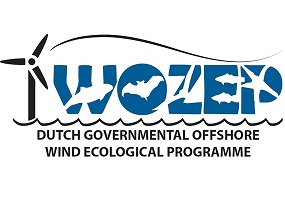Why WOZEP?
Under the Dutch Nature Conservation Act, the effect of the farms must remain within the ecological boundary conditions for the protected species. This means that, before a permit is granted for a new wind farm, a legal assessment takes place to ensure that, as required by law, the numbers of protected species are not reduced too drastically by those wind farms. The Netherlands has ambitions for sustainable energy; offshore wind has an important role to play here. The Ministry of Economic Affairs and Climate (EZK) is the ministry responsible. It is under an obligation, and indeed it believes this is very important, to make the most reliable possible assessment of current and future wind farms in the North Sea. For the purposes of estimating the impact, the focus is not confined to the Dutch plans for offshore wind. It also takes the plans of other countries bordering the North Sea into account: animals do not respect national borders and they often use the entire North Sea. EZK has asked Rijkswaterstaat to implement this ecological research.
Objective
The aim of the study is to map out the ecological effects of offshore wind, looking in particular at the species protected by the Dutch Nature Conservation Act. Expanding the knowledge base will make it possible to predict the ecological effects with greater certainty during the preparatory phases for each new offshore wind farm. What will be the impact on the ecology and, in particular, on the size of the populations of protected species? Wozep is looking not only at the impact of the wind farms that are currently in place and that will be built in the years to come (up to and including 2023) since this is still a fairly small section of the North Sea. Models are also being used to calculate the potential ecological impact in the future if larger areas are set aside for wind farms.
In order to limit the impact of either the construction of wind farms or operational wind farms on vulnerable species, regulations are being developed with which wind farm owners must comply. An example of this is the standard that has been introduced for underwater noise: a maximum has been set for the amount of noise that wind farm owners may generate during the construction of the wind farms. Mitigation measures can be used to reduce sound levels and comply with this requirement. Wozep is also focusing on refining regulations and, where possible, making mitigation measures more effective.
History
Wozep is a central, government-controlled, research programme. Before Wozep began, permits granted to wind farm owners were accompanied by a Monitoring and Evaluation (MEP) obligation with the aim of strengthening the knowledge base required for the ecological impact assessment. These MEP studies have produced a lot of knowledge on which Wozep is now building. The government has also conducted studies of the ecological effects in the past. . The Shortlist study , for example, was conducted in 2011 and the VUM study in 2013 . An important document upon which those two studies was based was the ‘Offshore wind Master Plan (pdf, 1.7 MB)’ , which contains all the knowledge questions relating to the ecological impact of offshore wind.
